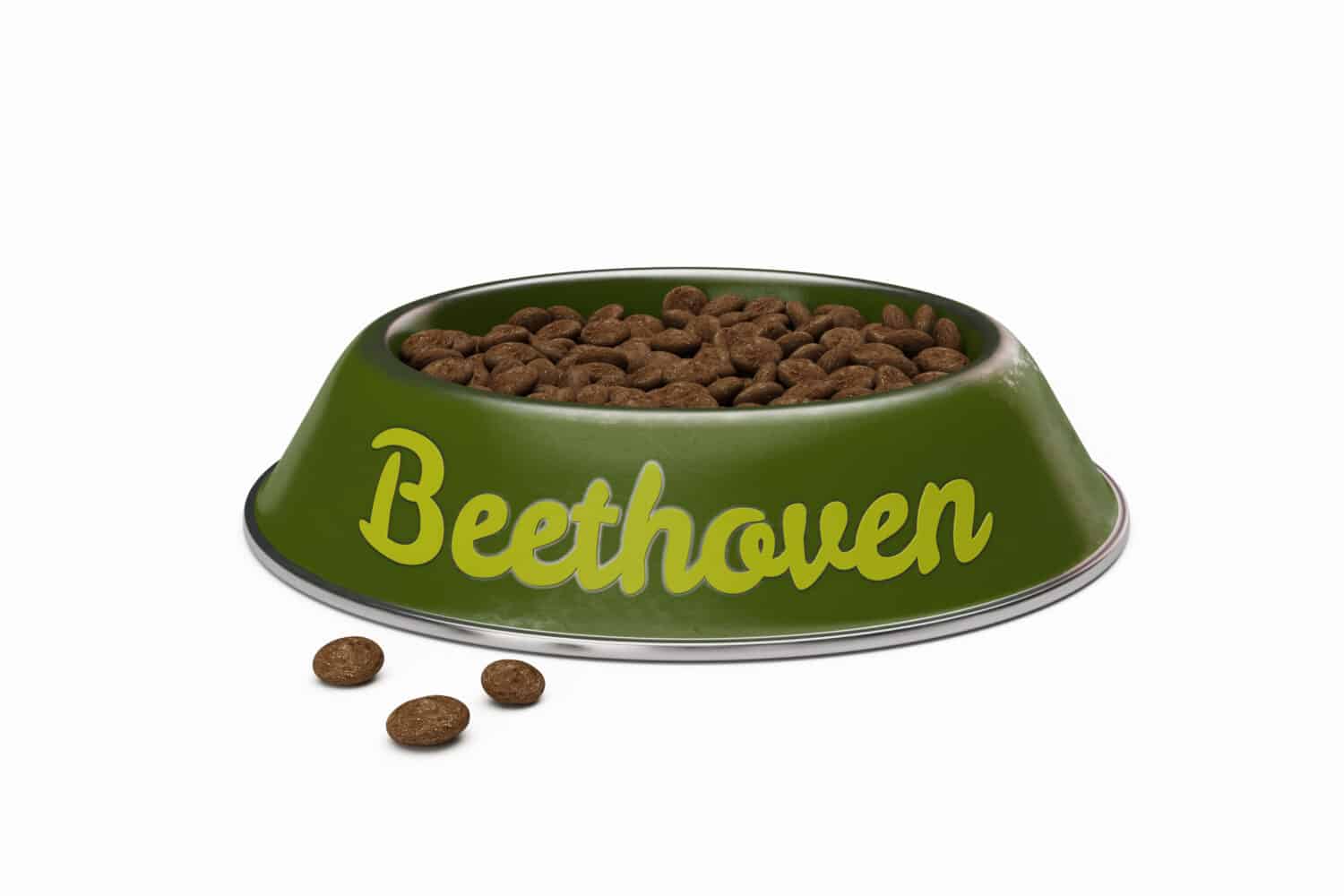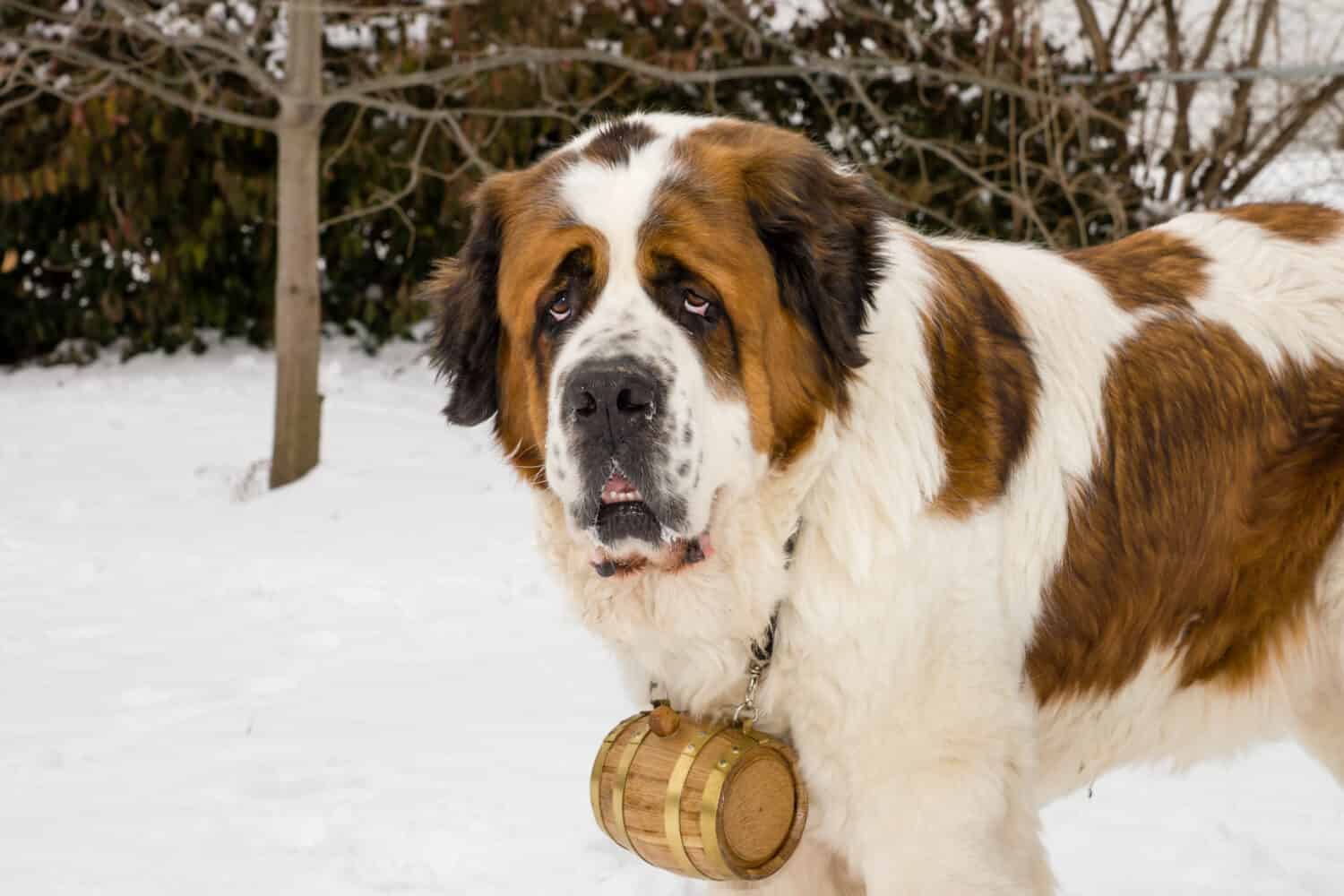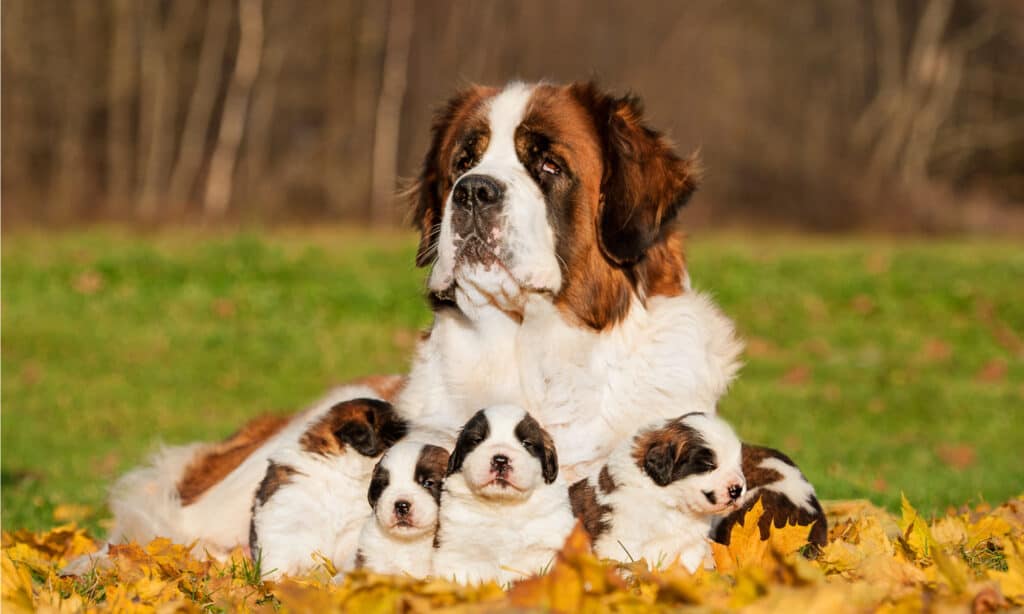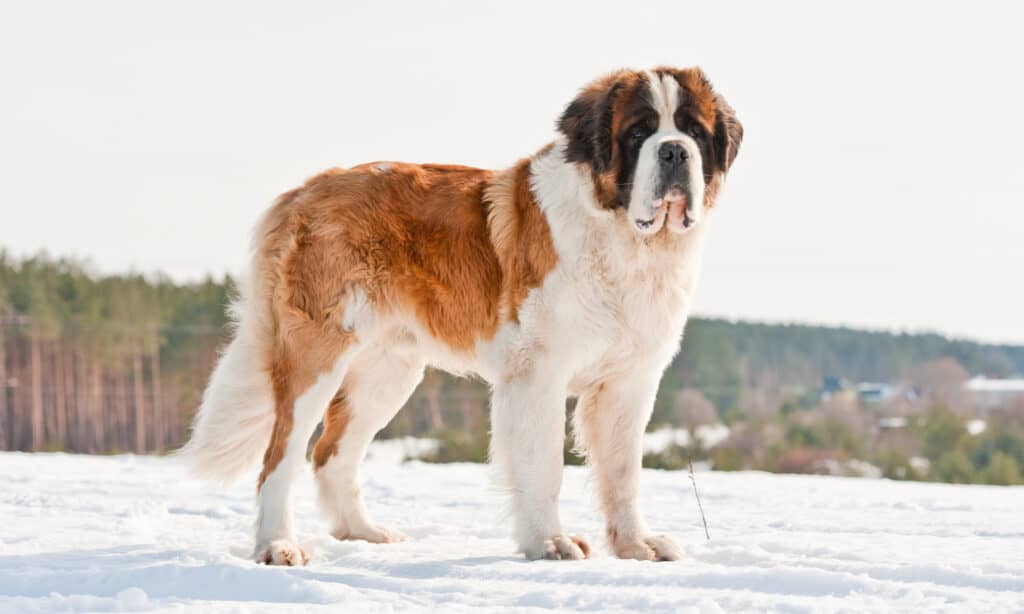In 1992, a new film swept the nation. This movie was Beethoven – a family comedy-drama about a suburban family adopting a dog. The story begins with an escape! After dognappers steal a group of puppies, one escapes to find a new life. This dog is Beethoven, a goofy, drooling animal with a big personality. Chaos ensues as the family learns to live with their new companion and faces all sorts of trouble along the way. What kind of dog was Beethoven, and what type of personality can you expect when you adopt a dog of his breed? We’re going to explore all that and more, so, as they say, stay tuned.
What Kind of Dog is Beethoven?

Beethoven became a series of 8 movies!
©virtua73/Shutterstock.com
Beethoven is a Saint Bernard, a variety of dogs originating in the western Alps of Europe. This is a giant-breed dog with a lot of cool features. We’ll explore some of these characteristics and features in this article, but you can find more information about these loving giants on our Saint Bernard informational page.
Breed Standard
According to the American Kennel Club, giant-breed dogs are dogs that range in size from 75-120+ pounds. Male Saint Bernards grow to 140-180 pounds, while females grow to 120-140 pounds. These dogs are also quite tall – reaching 26-30 inches by adulthood. A large, blocky head, strong chest and hindquarters, and broad, sloping shoulders characterize this breed. They have medium-sized ears and long, natural tails.
Their coats can be short or long. Both coat types are thick and well-adapted to cold climates. Saint Bernards are not hypoallergenic and they are prone to a moderate to high amount of shedding. Most Saint Bernards fully shed twice a year but can shed portions of their coat year-round. The color of their coat varies a lot and there are 13 standard coat colorations for the breed. These include brown and white, mahogany and white, brindle grizzle, white and red, white and orange, and reddish-brown mantle. Some coat coloring is outside of the standard. Nonstandard coat colorations include albino, solid color, and black and white.
Standard Saint Bernards have distinct markings, which include white markings on feet, chest, tail tips, nose-band, and collar area. Further, a standard Saint Bernard will have a face mask, also known as ‘piebald’. The mask is usually a darker shade than the rest of the coat and covers their eyes and ears.
All Saint Bernards have double coats. A double coat consists of a thick underlayer of fur and a second top layer made up of ‘guard hairs’. These longer guard hairs form a protective coat that protects the undercoat. Double coats require a different kind of grooming than single coats, and it is important to research proper coat care before adopting.
Saint Bernards have a lifespan of 8-10 years.
Breed Characteristics
There are a number of characteristics and personality traits assigned to the Saint Bernard. Puppies are often playful, jovial, mischievous, and high-energy, and it takes this breed a longer-than-average time to mentally develop to adulthood. Adult Saint Bernards are calm, sensible, loyal, eager to please, and affectionate.
This breed is well-known as a family dog, though it originated as a working dog. A hospice in the Alps bred and trained them as rescue dogs in the 1660s. The AKC recognized the breed in 1885, and its popularity as a family dog grew from there. Many people see these dogs as family dogs because of their patience, calm temperament, intelligence, and watchfulness.
A Note on Breed Characteristics
When we talk about breed characteristics, it is important to acknowledge that this is just a guideline for expected behavior. We can observe common behaviors based on the physiology of any given breed but we can’t guarantee any specific personality traits. Dogs are individuals, and there are several factors that influence their behavior. First, the time they spend with their mothers is integral to their development. A dog taken from its mother and litter-mates too early does not get the chance to develop important social skills. Further, ethical breeding plays a huge role in development. Poorly bred dogs – dogs with parents that are closely related or experiencing health issues – carry a higher risk of physical and neurological conditions, and this impacts the way they interact with the world.
The way we train and interact with our dogs, especially as puppies, also plays an enormous role in the outcome of their personalities. A dog trained with unethical practices, such as dominance and punishment, is more likely to develop traits we consider to be negative or unsavory. It is important to practice compassion and fear-free training on all dogs, regardless of breed. Many more factors impact dogs, including diet, and amount of exercise. Make sure to do research on all of these factors when considering adoption.
Common Health Issues

All dog breeds can develop health conditions.
©Ermolaev Alexander/Shutterstock.com
Purebred dogs can develop breed-specific health issues, and it is important to be aware of them.
First, as with many large and giant breed dogs, Saint Bernards are prone to hip and elbow dysplasia. Hip dysplasia occurs when the dog’s hip and elbow joints don’t grow to fit together properly. This causes a variety of issues over time, particularly arthritis. Good breeding helps prevent this condition, and reputable breeders will screen parent dogs for the condition before whelping. Joint issues are the most common condition that impacts Saint Bernards.
This breed is also prone to a condition called Gastric Dilatation Volvulus (GDV). This condition causes bloating and twisting of the stomach and can be fatal. It is important to watch for signs of bloating, as it can be indicative of a serious issue that requires immediate treatment.
Other common health conditions include heart failure, skin cancer, and other skin issues including skin fold pyoderma and ear infections.
Breed-specific health conditions are important to watch for, but not guaranteed to occur. You can take preventative measures to ensure the health of your companion, including proper diet and exercise, regular checkups, and adoption from reputable breeders. Please note that a clean bill of health when adopting does not guarantee a lifetime of health. All dog breeds require proper maintenance and regular veterinary care, and even the healthiest lifestyle only does so much to protect your pup from developing health conditions.
Saint Bernard Fun Facts and Myths

Not brandy: There are historical accounts of Saint Bernards carrying barrels of milk from local farms.
©Becky Swora/Shutterstock.com
Fun Facts:
- Saint Bernards get their name from Saint Bernard de Menthon, the patron saint of skiers and mountaineers.
- Monks in the Swiss Alps originally bred these dogs, but their ancestors were farm dogs.
- Saint Bernards are sensitive to heat.
- The largest-recorded Saint Bernard grew to over 330 pounds!
- Saint Bernards have a keen sense of smell and direction, which contributes to their fame as mountain rescue dogs.
Myths:
- The most common Saint Bernard myth is that they carried barrels of brandy around their necks to warm wayward travelers. There is no historical evidence of this, and consumption of alcohol actually lowers your body temperature. Historians believe this myth originates from an 1820 painting by Edwin Lanseer, titled ‘Alpine Mastiffs Reanimating a Distressed Traveler‘.
- Claims of a triple coat on Saint Bernards are untrue. Some dog breeds do have a triple coat, but Saint Bernards aren’t one of them.
- There is no ‘one true totally Swiss Saint Bernard’. All purebred Saint Bernards are true Saint Bernards.
- Saint Bernards are not classically high energy and clumsy like the dog in the movie. Instead, they are much more likely to be lazy, calm, or passive.
More Photos of Saint Bernards

Saint Bernard dogs are not fully mature until they are between 2-3 years old.
©Rita_Kochmarjova/Shutterstock.com

Snow-struck: Saint Bernards prefer cooler climates.
©Rita_Kochmarjova/Shutterstock.com

Saint Bernards, one of the biggest dog breeds, are naturally a lazy breed of dog, with a preference to sleep and lie about the house.
©Aneta Jungerova/Shutterstock.com

Giant puppy – this breed weighs up to 1.5 pounds at birth.
©schubbel/Shutterstock.com
The photo featured at the top of this post is © iStock.com/swisshippo
Ready to discover the top 10 cutest dog breeds in the entire world?
How about the fastest dogs, the largest dogs and those that are -- quite frankly -- just the kindest dogs on the planet? Each day, AZ Animals sends out lists just like this to our thousands of email subscribers. And the best part? It's FREE. Join today by entering your email below.
Thank you for reading! Have some feedback for us? Contact the AZ Animals editorial team.






